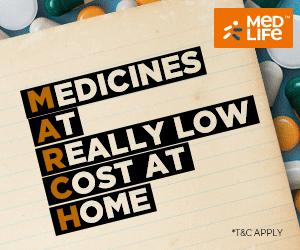Early gastric and colorectal cancer endoscopic surgery treatment removes off only the cancer
30-40% of early gastric cancers have ESD… The stomach can be preserved with no scars remaining...
 |
| Image Source: Royalty free creative commons |
This high survival rate is due to the widespread use of gastric and colonoscopy. As the number of people receiving national cancer screenings and health checks increases, the diagnosis and surgery of stomach and colon cancer for the elderly over the age of 80, which were not easy before, are also becoming active. In particular, when gastric and colon cancer is limited to the site of occurrence and does not spread to the surrounding lymph nodes, a treatment has been established to undergo endoscopy without requiring major surgery and at the same time simply remove the cancer lump and pre-cancerous lesions.
30-40% of early gastric cancer, removed only by endoscopy
Endoscopic submucosal dissection (ESD) is generally performed for early gastric cancer (stage 1) where cancer remains in the gastric mucosa and submucosa and there is no lymph node metastasis. The 5-year survival rate of ESD is 93-96%, similar to that of surgery (gastrectomy). Since ESD was selected as a new medical treatment in 2007, it has been established as a curative treatment for relatively large early gastric cancer. According to the 2015 gastric cancer adequacy assessment report by the Health Insurance Review and Assessment Service, 32.6% of the subjects of the assessment received endoscopic treatment. From November 2018, health insurance was applied to ease the burden of expenses. Cancer patients only need to pay 5-10% of the cost, and patients with other procedures such as pre-cancer treatment only need to pay 80%.
If a lesion is found during gastroscopy, it is determined whether it is a target for ESD treatment. If applicable, insert a knife through an endoscope and gently peel off only the area with cancer cells, as if making sashimi. As well as preserving the stomach, it does not leave scars and does not require laparotomy or general anesthesia, enabling rapid recovery.
Since gastrectomy, a standard treatment method, cuts the entire or part of the stomach with cancer, the normal gastric function is lost and the quality of life is inevitably reduced. On the other hand, ESD maintains the above function. Hong Ji-taek, a professor at the Ewha Womans University Mokdong Hospital, said on the 7th, "30-40% of patients with early gastric cancer can be treated with ESD alone."
According to the guidelines for early gastrointestinal cancer, which was distributed this year, in the case of gastric cancer, it is'differentiated adenocarcinoma' (a type that resembles normal cells), and if the cancer is less than 2 cm in diameter, which is not suspicious of invading the lower mucosa when viewed through an endoscope. It becomes an absolute indication. Recently, it has been applied to a wider range. If the biopsy reveals that the cancer is deeper than the submucosal layer of the stomach or if there is a possibility of lymph node metastasis, additional surgery may be required separately from ESD.
The big advantage of ESD is that it is not open surgery, so even the elderly can receive it without burden. As a result of an analysis of the treatment and long-term survival rate of 576 gastric cancer patients aged 65 years or older from 2005 to 2018 by Professor Jeong Hye-kyung of this hospital, the risk of death in the untreated group was 9.4 times higher than that of the treatment group in the case of early gastric cancer where endoscopic resection was possible. Both the elderly and super-aged gastric cancer patients have improved their survival rate and quality of life through active endoscopy treatment. Professor Jeong said, "However, there are cases in which ESD can not be implemented in patients with severe cardiovascular disease, such as patients with poor cooperation, such as insufficient sedation or awakening in the middle as it proceeds with sleep (sedation) endoscopy."
Despite ESD's good performance and many benefits, there are still some things to watch out for. Cancer reoccurs at the site removed by an endoscope (simultaneous gastric cancer) or a new cancer grows elsewhere in the remaining stomach (different gastric cancer). According to an overseas study, 12.9% of concurrent lesions and 2.5% of heterotrophic lesions were found when follow-up of early gastric cancer and pre-gastric cancer (adenoma) after treatment with ESD. In domestic studies, the ratio was higher than this (simultaneous 20.8%, Lee Siseong 20.1%).
Professor Jeong explained, "In the case of endoscopic resection, most of the stomach other than the lesion site is preserved, and the background mucous membrane (chronic gastritis, intestinal epithelial metastasis) that caused cancer remains intact, so there remains a risk of new occurrence." On the other hand, in resection surgery, most of the stomach is cut and the remaining stomach is partially or completely absent, so the rate of recurrence or occurrence of cancer is low.
Gastric cancer is caused by chronic gastritis due to a combination of various environmental factors such as Helicobacter pylori infection, smoking, drinking, and stimulating food, and gradually degenerations such as mucosal atrophy and intestinal epithelial metabolism (gastric mucosa change like intestinal mucosa).
Therefore, even if you have been completely treated with ESD, in order to reduce the risk of further cancer, you should get treatment to get rid of any Helicobacter infections, then quit smoking and abstain from alcohol. You should also be careful about high-risk diets for stomach cancer, such as eating too salty or burning food. Above all, do not neglect regular endoscopic follow-up.
Important for preventive resection in pre-stage colon cancer
Colon cancer is also subject to endoscopic treatment when it is confined to the intestinal mucosa or submucosa like stomach cancer. Among the polyps (polyps) that form lumps on the colon mucosa, the'adenoma', which has a high possibility of cancer, turns into cancer after a long period of time. Therefore, if it is removed at the adenoma stage by colonoscopy, it can prevent colon cancer and lower the mortality rate. There is a study report showing that polypectomy through colonoscopy reduces the risk of colon cancer by 76-90%.
In the case of protruding polyps,'endoscopic mucosal resection (EMR)', which is usually removed by walking with a snare, is performed. For early colorectal cancer, which is difficult to complete resection, ESD is recommended, in which the lesion is cut out using a special endoscopic knife like gastric cancer. If the advanced adenoma is too large to be trapped with a lasso, ESD is needed instead of EMR. Professor Moon Chang-mo of the Department of Gastroenterology said, "Since the survival rate of colorectal cancer decreases sharply if it spreads to other areas, early detection and endoscopic resection are very important."
According to the national cancer screening, colonoscopy is being carried out every year for people over 50 years old, but it is pointed out that this should be accelerated. If you need to take into account the previous colonoscopy results or family history, you should actively receive them from your 30s.
Copyright statement: The graphic is irrelevant. This article is reproduced for the purpose of conveying more information. If there is an error in the source labeling or infringement of your legal rights, please contact the website with the certificate of ownership, and we will correct and delete it in time, thank you.
















No comments:
Post a Comment